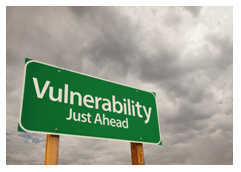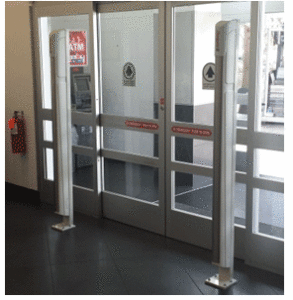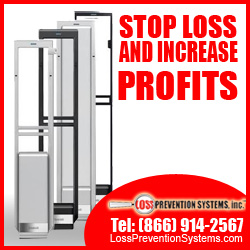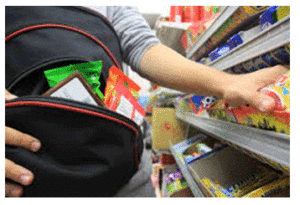 Have you ever noticed how we all anticipate a New Year will bring new and exciting things into our lives (or businesses) but after the first month we often realize that nothing is new or improved or better? In fact, we may be disappointed as the year progresses that problems we hoped would be resolved (read, “magically disappear”) are still there. We make resolutions at the beginning of the year that are meant to help “improve” or “fix” something we know is an opportunity but then we slide back into our routines and those “problems” don’t get any better.
Have you ever noticed how we all anticipate a New Year will bring new and exciting things into our lives (or businesses) but after the first month we often realize that nothing is new or improved or better? In fact, we may be disappointed as the year progresses that problems we hoped would be resolved (read, “magically disappear”) are still there. We make resolutions at the beginning of the year that are meant to help “improve” or “fix” something we know is an opportunity but then we slide back into our routines and those “problems” don’t get any better.
In retail, those problems may involve personnel issues such as hiring and retention. Concerns may be for store profitability including expenses, sales, and shortage. Maybe concerns are over what may be classified non-controllable expenses, building rent, taxes, etc. Wishing problems away is not a solution nor is a resolution. If you want to resolve to solve problems you have you need to create an actual action plan and then take a partner(s) to stick to it, often one of your store managers or department management team. As you look at the areas of opportunity and break them down you can find that correcting one area can make a significant impact on other areas. Let me give you an example of what I mean.
e.g You identify that you have an issue with excessively high merchandise shrink.
You need to identify all of the possible causes of the shortage problem.
- Do you use retail anti-theft devices?
- If you use a Sensormatic security system are you tagging everything?
- What areas are your highest shortage departments and are they vendor serviced?
- If they are vendor serviced are you checking in and out vendors?
- Are you improperly tossing out of date merchandise rather than receiving vendor credits?
- Is employee theft causing shrinkage you haven’t seen?
- Do you complete pre-employment background checks before hiring?
- Do you require pre-employment drug screening?
- Do you know the signals to look for that would indicate an employee may be stealing?
- Do you control your compactor and who throws out the trash and if you have a baler who is crushing cardboard?
- Employees and vendors who are stealing and have access to a compactor will toss out the empty packages they would otherwise leave behind.
- Uncontrolled compactors mean anyone can throw away anything that looks like trash but some small items can be overlooked and thrown away and cause a shortage.
These are not all of the contributors to a shortage. You can continue to drill down and I would encourage you and your team to do so. The project doesn’t stop there. Once you have identified the issues you need to create an action plan to address each concern. The plan should also include benchmarks or measurements that will show you are doing what you said you would do. There must also be deadlines for completion.
There are areas that will cross over and can be beneficial to each section. Let’s say that you have focused on shortage and you also believe you have a hiring/retention problem. It seems people are going in and out like a revolving door. You have to ask yourself are you hiring the right people in the first place. If your employees keep leaving it could be they have stolen from you to get what they want and they are leaving before you catch on to them. If you start doing background checks you will be more selective in who you are bringing on your team. You may have been hiring a lot of people with criminal records or spotty work histories. Being selective and hiring the right people can also build a more dependable workforce. This leads to improved morale, more initiative and a better work ethic overall. Improving your hiring can improve shortage results due to dishonest employee activity.
Another example of crossover would be compactor controls. Start regulating who is tossing out the trash and you impact retail shrinkage but you may also find that merchandise that was being overlooked is now being stocked more carefully. Overlooked items are getting back on the sales floor. Not only do you reduce shortage you improve sales.
Wishing the New Year will bring improvements is no way to operate a business. Planning and follow through on those plans will bring about the positive changes you want to see. Resolve that 2019 will be a year of growth and profitable sales! Happy New Year!
 It’s 2019 and time to make some New Year’s resolutions! We all know how easy a resolution can be to make but they are hard to keep. We also know that it is just as easy to break a resolution but are there resolutions a store owner can make that would benefit the store AND benefit society? I think one resolution that would be mutually beneficial for both would be the implementation of environment-friendly policies and procedures. We are talking about sensible measures that would appeal to anyone on either side of the political spectrum. Right now there is a big push for the elimination of plastic shopping bags. There are also those opposed to going back to paper bags. What could the solution be? Try encouraging the use of recyclable, reusable shopping bags for your customers. You make those opposed to one-time use bags happy and you save money on the need to regularly purchase more shopping bags (which can be a rather pricey supply on your monthly expense report). To implement this type of change you would want to have reusable bags ready for your customers and you might even give them away for the first few weeks you start the program. After that, you might give customers a small discount to customers who bring their own bags, say 1% on every transaction.
It’s 2019 and time to make some New Year’s resolutions! We all know how easy a resolution can be to make but they are hard to keep. We also know that it is just as easy to break a resolution but are there resolutions a store owner can make that would benefit the store AND benefit society? I think one resolution that would be mutually beneficial for both would be the implementation of environment-friendly policies and procedures. We are talking about sensible measures that would appeal to anyone on either side of the political spectrum. Right now there is a big push for the elimination of plastic shopping bags. There are also those opposed to going back to paper bags. What could the solution be? Try encouraging the use of recyclable, reusable shopping bags for your customers. You make those opposed to one-time use bags happy and you save money on the need to regularly purchase more shopping bags (which can be a rather pricey supply on your monthly expense report). To implement this type of change you would want to have reusable bags ready for your customers and you might even give them away for the first few weeks you start the program. After that, you might give customers a small discount to customers who bring their own bags, say 1% on every transaction. For a loss prevention officer, the holiday season is a hard time to be jolly when the busiest shopping season of the year brings with it its shoplifters, crime, and theft.
For a loss prevention officer, the holiday season is a hard time to be jolly when the busiest shopping season of the year brings with it its shoplifters, crime, and theft. It’s here! The holiday season and there is a spirit of goodwill that hopefully we all share towards each other. For retail owners and managers the joyful spirit is boosted when sales are good as customers are buying gifts and purchasing foods for baking and holiday meals. For the most part people seem to be a bit more patient towards each other (except maybe in a mall parking lot where drivers fight for the best parking places). It really is the most wonderful time of the year!
It’s here! The holiday season and there is a spirit of goodwill that hopefully we all share towards each other. For retail owners and managers the joyful spirit is boosted when sales are good as customers are buying gifts and purchasing foods for baking and holiday meals. For the most part people seem to be a bit more patient towards each other (except maybe in a mall parking lot where drivers fight for the best parking places). It really is the most wonderful time of the year! For the retail industry and small businesses in general, the holiday season has started, and for them, this season can be a financial boost for their business.
For the retail industry and small businesses in general, the holiday season has started, and for them, this season can be a financial boost for their business. Black Friday and the holiday shopping weekend has generally been the time of the year that most retailers are excited about. This is the time when shoppers are going to pull out their wallets and spend money. Deep discounts, doorbusters, even gift bags for the first customers, have been used to entice shoppers to visit stores early. It has been so successful as a marketing tool that stores have even advertised early Black Friday sales in JULY! Unfortunately, it seems that there has been a dark cloud overshadowing this weekend and it is more ominous each year. This cloud is one that can turn a Black Friday into a Bleak Friday if a store owner isn’t prepared for it.
Black Friday and the holiday shopping weekend has generally been the time of the year that most retailers are excited about. This is the time when shoppers are going to pull out their wallets and spend money. Deep discounts, doorbusters, even gift bags for the first customers, have been used to entice shoppers to visit stores early. It has been so successful as a marketing tool that stores have even advertised early Black Friday sales in JULY! Unfortunately, it seems that there has been a dark cloud overshadowing this weekend and it is more ominous each year. This cloud is one that can turn a Black Friday into a Bleak Friday if a store owner isn’t prepared for it. One of the most prevalent crimes in the United States is shoplifting.
One of the most prevalent crimes in the United States is shoplifting. NO! not yet. Before we begin patting ourselves on the back you must remember that your Sensormatic System is only part of your shoplifting solution. Your Sensormatic System will protect your merchandise however, many shoplifters are determined and will try to steal anyway. The Sensormatic System itself is a deterrent. Its mere presence will dissuade many shoplifters.
NO! not yet. Before we begin patting ourselves on the back you must remember that your Sensormatic System is only part of your shoplifting solution. Your Sensormatic System will protect your merchandise however, many shoplifters are determined and will try to steal anyway. The Sensormatic System itself is a deterrent. Its mere presence will dissuade many shoplifters.
 I was once asked why I kept toys on my desk in my Loss Prevention office. I had two reasons, the first was they were collectible superhero figurines (The Tick to be precise) and the other was to keep children entertained. It is a sad fact in Retail Loss Prevention but there are children who shoplift, there are parents who shoplift and there are parents who use their children to help shoplift. As a Loss Prevention professional, it is not hard to handle an adult who steals. There may be anger, tears, and pleading but these are adults and they made a choice to steal so there should be consequences. What is not so easy to cope with is the child who has to sit in the office while the parent is being processed and does not understand what is taking place. There were many instances when I had to try to keep these young ones entertained as mom or dad were answering questions about the crime, providing personal information or trying to contact a family member or friend who would be willing to pick up the child. Add to the mix a parent who is throwing a conniption fit or making the scenario worse by bawling and wailing in front of the child begging you to let them go “Just this one time and it won’t ever happen again, I promise.” It becomes quite annoying. It also upsets the child who becomes a prop for the parent. The toys were my prop to entertain the children in a pinch.
I was once asked why I kept toys on my desk in my Loss Prevention office. I had two reasons, the first was they were collectible superhero figurines (The Tick to be precise) and the other was to keep children entertained. It is a sad fact in Retail Loss Prevention but there are children who shoplift, there are parents who shoplift and there are parents who use their children to help shoplift. As a Loss Prevention professional, it is not hard to handle an adult who steals. There may be anger, tears, and pleading but these are adults and they made a choice to steal so there should be consequences. What is not so easy to cope with is the child who has to sit in the office while the parent is being processed and does not understand what is taking place. There were many instances when I had to try to keep these young ones entertained as mom or dad were answering questions about the crime, providing personal information or trying to contact a family member or friend who would be willing to pick up the child. Add to the mix a parent who is throwing a conniption fit or making the scenario worse by bawling and wailing in front of the child begging you to let them go “Just this one time and it won’t ever happen again, I promise.” It becomes quite annoying. It also upsets the child who becomes a prop for the parent. The toys were my prop to entertain the children in a pinch.